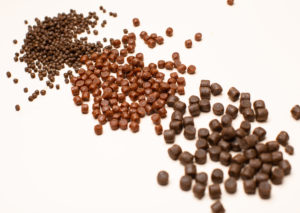Smolt ‘grow more rapidly’ on a krill diet

Salmon smolt given feed that includes hydrolysed krill grow faster and are more likely to survive their introduction to the sea, according to researchers at Nofima, the Norwegian Institute of Food, Fisheries and Aquaculture Research.
The study aimed to find ways to reduce smolt mortality and improve growth for the critical first year at sea. The study, carried out in collaboration with krill producer Rimfrost, used a hydrolysed krill-based protein, OlyPep.
The researchers found that even small quantities of the krill protein had a positive impact on feed intake and growth. Senior Researcher Dr Sissel Albrektsen said: “In our experiments we observed that the relatively small quantities of hydrolysed krill added to the feed produced great results. We noticed that the smolt quickly start feeding and we saw a greater increase in weight. Larger, more robust fish can quickly improve the economic situation of fish farmers.”
Two different methods were used for adding hydrolysed krill to smolt feed: adding it before extrusion; or as a top coating on ready-made feed pellets. The effects of feed with added hydrolysed krill were compared to a control diet containing a similar formulation, but without added hydrolysed krill.
Feed pellets that have been top-coated with hydrolysed krill produce the best results and the fish quickly start eating as soon as they are released into the sea. This is because the water-soluble compounds coating the pellets quickly leach out and mix with the water surrounding the smolt.
The study found that the krill feed also helps the smolt develop healthy skin. Dr Albrektsen explained: “By using an advanced fish skin analysis tool in a follow-up experiment involving salmon being released into the sea, we found fewer incidences of injuries and dark pigments in the skin of fish which had hydrolysed krill in their feed. This shows that fish which eat and grow well develop thicker skin at an earlier stage compared to fish that start feeding at a later stage. Better quality fish skin means more robust fish which are less prone to injury and disease. Addition of krill hydrolysate can help to improve fish health and the economic situation of fish farmers.”

The differences in feed intake result in marked differences in growth, depending on which type of feed the smolt have been given The feeds in the photo were not used in the trial. Photo: Joe Urrutia © Nofima.

